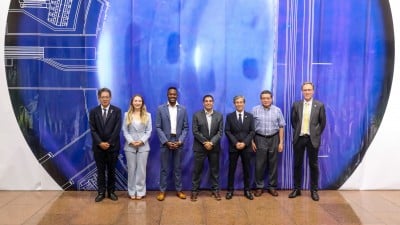Science
Princeton Lab Supplies Key Tech for World’s Largest Fusion Reactor

The **Princeton Plasma Physics Laboratory** (PPPL) is set to play a pivotal role in the development of the world’s largest superconducting fusion reactor, known as **JT-60SA**. This collaboration marks a significant milestone, as it represents one of the first contributions to the fusion project from an institution outside of **Japan** and **Europe**.
The JT-60SA, located in **Naka, Japan**, aims to advance the understanding of plasma behavior and improve the prospects for practical fusion energy. The project is a collaborative effort involving the **European Union** and the Japanese government, with an emphasis on harnessing the potential of nuclear fusion as a clean energy source.
Innovative Measurement Technology
The measurement technology provided by PPPL is crucial for the operational success of the JT-60SA. This technology enables precise monitoring of plasma conditions, which is essential for maintaining stability and efficiency within the reactor. Accurate data collection will help researchers understand how plasma behaves under various conditions, which is fundamental for progressing toward viable fusion energy.
According to PPPL Director, **Dr. Steven Cowley**, “Our involvement with JT-60SA not only enhances the project but also strengthens international collaboration in fusion research.” The ability to measure plasma accurately is a critical component in achieving sustained fusion reactions, and this partnership illustrates the global effort to address energy challenges.
The Future of Fusion Energy
Fusion energy has long been considered the ‘holy grail’ of energy production due to its potential to provide a nearly limitless source of power without the harmful emissions associated with fossil fuels. By leveraging advanced technologies and international partnerships, projects like JT-60SA are paving the way for breakthroughs that could reshape the global energy landscape.
The collaboration between the Princeton Plasma Physics Laboratory and the JT-60SA project underscores the importance of sharing expertise and resources in the quest for sustainable energy solutions. With PPPL’s contributions, the fusion community is one step closer to realizing the dream of commercial fusion energy, which could have profound implications for energy security and environmental sustainability worldwide.
As the world continues to grapple with climate change and the need for cleaner energy sources, initiatives such as JT-60SA represent a beacon of hope for future generations. The advancements made in this field could play a significant role in the transition to a more sustainable energy grid, benefiting countries around the globe.
-

 Technology4 months ago
Technology4 months agoDiscover the Top 10 Calorie Counting Apps of 2025
-

 Health2 months ago
Health2 months agoBella Hadid Shares Health Update After Treatment for Lyme Disease
-

 Health3 months ago
Health3 months agoErin Bates Shares Recovery Update Following Sepsis Complications
-

 Technology4 weeks ago
Technology4 weeks agoDiscover 2025’s Top GPUs for Exceptional 4K Gaming Performance
-

 Technology2 months ago
Technology2 months agoElectric Moto Influencer Surronster Arrested in Tijuana
-

 Technology4 months ago
Technology4 months agoDiscover How to Reverse Image Search Using ChatGPT Effortlessly
-

 Technology5 months ago
Technology5 months agoMeta Initiates $60B AI Data Center Expansion, Starting in Ohio
-

 Technology4 months ago
Technology4 months agoRecovering a Suspended TikTok Account: A Step-by-Step Guide
-

 Health4 months ago
Health4 months agoTested: Rab Firewall Mountain Jacket Survives Harsh Conditions
-

 Lifestyle4 months ago
Lifestyle4 months agoBelton Family Reunites After Daughter Survives Hill Country Floods
-

 Technology3 months ago
Technology3 months agoUncovering the Top Five Most Challenging Motorcycles to Ride
-

 Technology4 months ago
Technology4 months agoHarmonic Launches AI Chatbot App to Transform Mathematical Reasoning





















